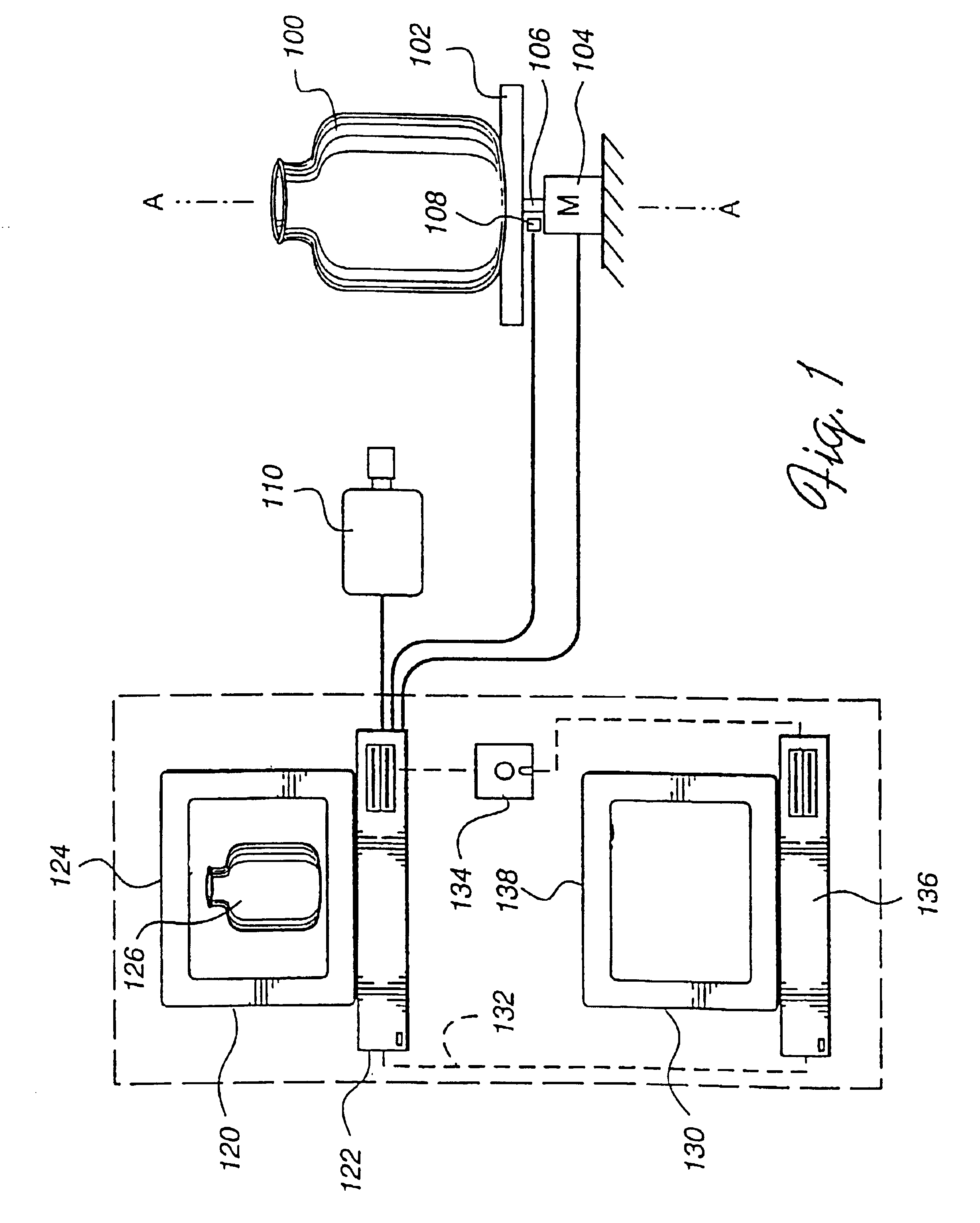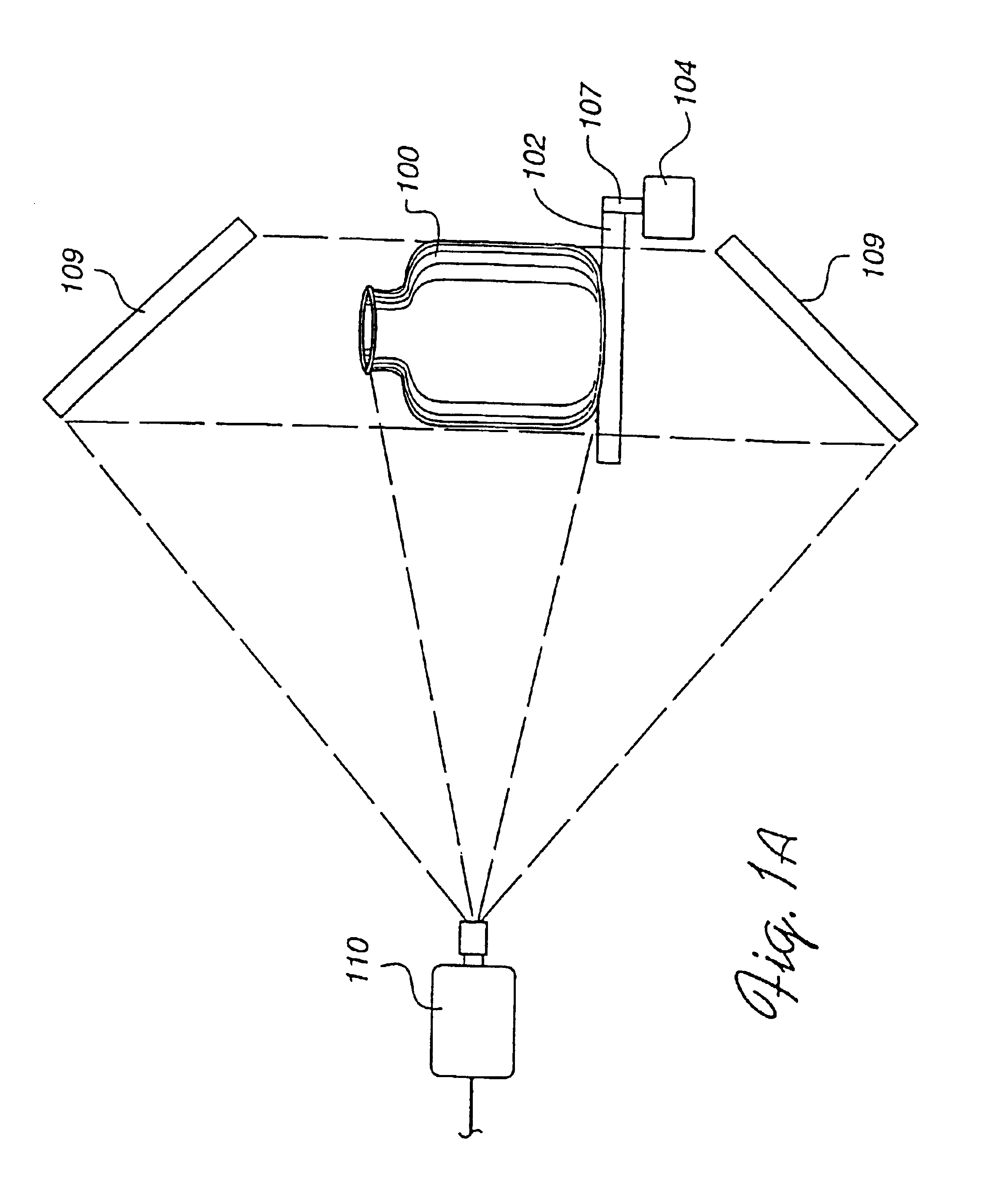Method and apparatus for scanning three-dimensional objects
a three-dimensional object and scanning method technology, applied in the field of optical scanners, can solve the problems of difficult conformal mapping of two-dimensional color information onto the three-dimensional surface model, difficult to solve the problem of associating color information with three-dimensional objects, and complicated process of mapping 2-d color information to 3-d position information, etc., to achieve the effect of enhancing system accuracy and reducing system cos
- Summary
- Abstract
- Description
- Claims
- Application Information
AI Technical Summary
Benefits of technology
Problems solved by technology
Method used
Image
Examples
Embodiment Construction
In FIG. 1, an embodiment of the present invention includes a system for obtaining a series of two dimensional color images of an object and processing those images to obtain a three dimensional model of the surface of the object. An object 100 which is to be digitized is placed on a rotatable platform 102. A motor 104 is provided to drive rotatable platform 102 via a shaft 106. A position encoder 108 detects the angular position of rotatable platform 102 and generates an electrical signal which represents the angular position of rotatable platform 102. An optical detector 110 (e.g. a color video camera) views object 100 and creates a two dimensional color image of object 100.
As object 100 is rotated by rotatable platform 102, detector 110 captures a series of color images of object 100. Each color image taken at a different time is associated with an angular rotation of object 100 about an axis of rotation, “A” which runs through shaft 106. Information about the angular position of ...
PUM
 Login to View More
Login to View More Abstract
Description
Claims
Application Information
 Login to View More
Login to View More - R&D
- Intellectual Property
- Life Sciences
- Materials
- Tech Scout
- Unparalleled Data Quality
- Higher Quality Content
- 60% Fewer Hallucinations
Browse by: Latest US Patents, China's latest patents, Technical Efficacy Thesaurus, Application Domain, Technology Topic, Popular Technical Reports.
© 2025 PatSnap. All rights reserved.Legal|Privacy policy|Modern Slavery Act Transparency Statement|Sitemap|About US| Contact US: help@patsnap.com



